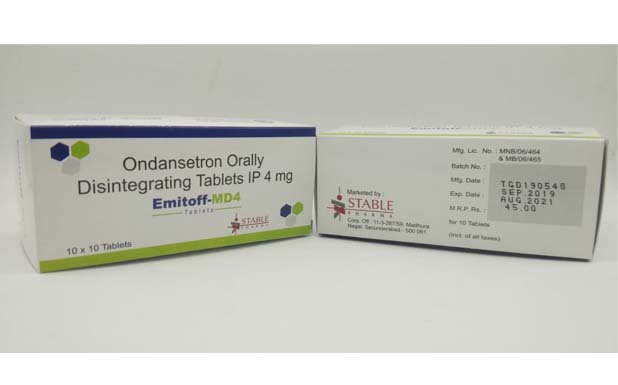It is mainly used for the treatment of nausea and vomiting caused by chemotherapy drugs like cisplatin etc.
Indications:
● Post-operative nausea and vomiting
● Post – radiotherapy induced nausea & vomiting
● Indicated to be used by geriatric population
● Cholestatic pruritis
Mechanism of action:
The enterochromaffin cells present in the small intestine contains 5-HT3 receptors which initiates the vomiting reflex ondansetron block this reflex.
Also, it blocks the serotonin receptors located on the cerebral nervous system and initiates its antiemetic effect.
Pharmacology:
Absorption: Owing to hepatic first-pass metabolism, its bioavailability is only about 60%.
Distribution: Plasma protein binding of ondansetron as measured in vitro was 70% to 76%, over the pharmacologic concentration range of 10 to 500 ng/mL. Circulating drug also distributes into erythrocytes.
Metabolism: Ondansetron is extensively metabolized in humans, with approximately 5% of a radiolabeled dose recovered as the parent compound from the urine. The primary metabolic pathway is hydroxylation on the indole ring followed by subsequent glucuronide or sulfate conjugation.
Elimination: In adult cancer patients, the mean ondansetron elimination half-life was 4.0 hours, and there was no difference in the multidose pharmacokinetics over a 4-day period.
Drug Interactions:
Ondasteron interacts with the following drugs; thereby their co-administraton should be carefully monitored simultaneously:
● Drugs Affecting Cytochrome P-450 Enzymes
● Apomorphine
● Phenytoin, Carbamazepine, and Rifampin
● Tramadol
● Chemotherapy
● Temazepam.
Side Effects:
● Headache
● Lightheadedness
● Dizziness
● Drowsiness
● Tiredness
● Constipation.
Contraindications:
● Contraindicated for patients known to have hypersensitivity (e.g., anaphylaxis) to this product or any of its components.
● The concomitant use of apomorphine with ondansetron is contraindicated based on reports of profound hypotension and loss of consciousness when apomorphine was administered with ondansetron.
Precautions:
QT Prolongation -Ondansetron prolongs the QT interval in a dose-dependent manner. Avoid ondasterone in patients with congenital long QT syndrome. The use of ondasterone in patients following abdominal surgery or in patients with chemotherapy-induced nausea and vomiting may mask a progressive ileus and gastric distention.
Use In Specific Populations:
● Ondasterone should be used during pregnancy only if clearly needed.
● Caution should be exercised when ondansetron is administered to a nursing woman.
● It is recommended that patients less than 4 months of age receiving this drug be closely monitored.
● Caution should be exercised when ondasterone is administered to a patient with renal or hepatic impairment.
